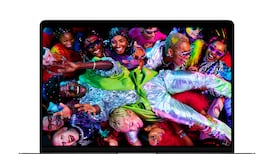Google envisions a world where a blind man can get in his car alone and tell it to take him to the grocery store. California regulators say self-driving cars aren't smart enough yet to zip around town without a driver ready to take the wheel.
The US state’s Department of Motor Vehicles is finalising regulations for the everyday use of autonomous cars with the goal of releasing them in the next year. They would require a licensed driver - and a steering wheel - just in case something goes wrong. Google says the rules limit the technology’s potential.
Bryan Bashin, the 60-year executive director of LightHouse for the Blind and Visually Impaired in San Francisco who uses a long, white cane to manoeuvre city streets, said a driverless car “would be one of the biggest advances for the blind since talking computers or even Braille.” It represents freedom from the hassles of public transit and makes suburban destinations attainable, he said.
Car and technology companies are closely watching California’s adoption of the rules, which could open the largest US consumer market,39 million people, to the new technology. It also will likely influence other US states as they develop their own regulations.
Revolution
California has often been first to adopt policies later embraced by other US states, including clean-air standards, legalisation of medical marijuana and paid family leave. The technology could revolutionise the way people get around, replace traditional cars, and transform roads and motorways to accommodate them. California’s efforts coincide with the Obama administration’s push to foster the industry, including developing federal guidelines and pledging a 10-year, $4 billion (€3.7bn) budget for research and infrastructure changes.
Six US states, including Nevada and Michigan, and Washington, DC, already have enacted legislation advancing the development of the cars, according to the Denver-based National Conference of State Legislatures. The Golden State is the pacesetter.
“California is the place that everyone’s watching and learning what to do and what not to do,” said Bryant Walker Smith, assistant professor at the University of South Carolina School of Law who has taught a course on self-driving cars.
Opponents say requiring a licensed operator in a self- driving car defeats the purpose of the technology.
“We need to be careful about the assumption that having a person behind the wheel will make the technology more safe,” Chris Urmson, Google’s director of its self-driving car project, said at the meeting.
“It’s a generally understood problem with people monitoring for long durations of fairly robust technology. They do it poorly. Failures result from it.”
Banning minivans
Banning autonomous cars that can operate without a driver would be like banning minivans (people carriers) from carrying more than one passenger, said Matthew Schwall, director of field performance engineering at Tesla Motors . "What you're doing is taking away one of the most compelling features," Mr Schwall said.
“So fewer consumers would purchase these vehicles and manufacturers wouldn’t invest as much in their development.”
California doesn’t outright oppose allowing autonomous cars to operate without a human intervention, said DMV spokeswoman Jessica Gonzalez. It’s just that vehicles without a driver and steering wheel haven’t been tested enough, she said.
“We want to get there,” Gonzalez said. “We’re definitely not against it. We just need to make sure that it’s safe.”
Getting there could open up a massive market.
The sale of autonomous car components is expected to grow from $42 billion in 2025 to $77 billion by 2035, according to Boston Consulting Group data. The cars could represent 25 per cent of the worldwide market by 2035, the data show.
Google, Tesla, BMW, Mercedes-Benz, Honda, Volkswagen and Ford are among 11 companies that have autonomous-vehicle testing permits, according to December data from the California DMV. Even Apple may be working on a driverless-car project.
Driver phase
“A phase with a driver, at least to get started to see how things are happening, share data and collect experience, may be the way to ensure that the process is under control and that nothing regrettable happens,” said Xavier Mosquet, a Detroit- based senior partner in the automotive practice at the Boston Consulting Group.
Some companies are already experimenting with the technology. Tesla this month unveiled features that allow a driver who has stepped out of the car to prompt it to open the garage door, park itself and shut down. Elon Musk, Tesla's chief executive officer, predicts an electric car will drive autonomously from coast to coast within two years.
“For California I see two good things - the regulator is coming up with solutions and they are not waiting or slowing things down,” Mr Mosquet said.
Approval can’t come swiftly enough for Diane Starin, 57, a Sacramento resident who went blind as a toddler from cancer of the optic nerve. She gets around on public transit and hails cars through apps from Uber and Lyft.
“I envision it drastically changing my life,” she said.
“Everything from necessities to socialising, being out late at night and not worrying about how to get home. It’s huge. It’s just like someone getting a car who didn’t have one.”














